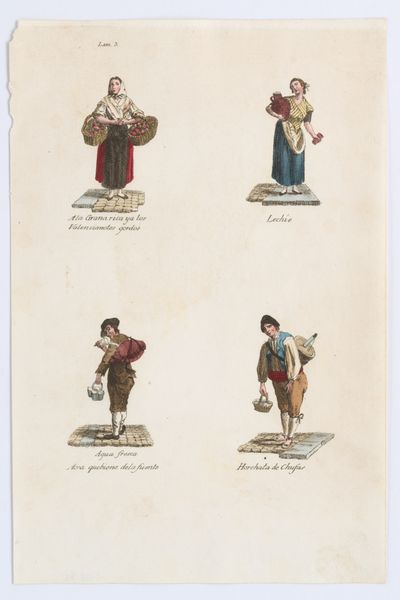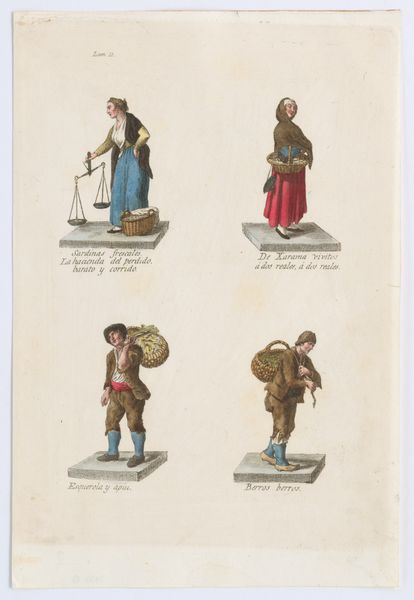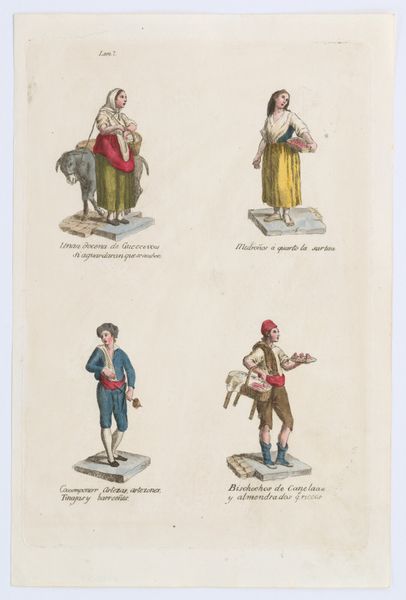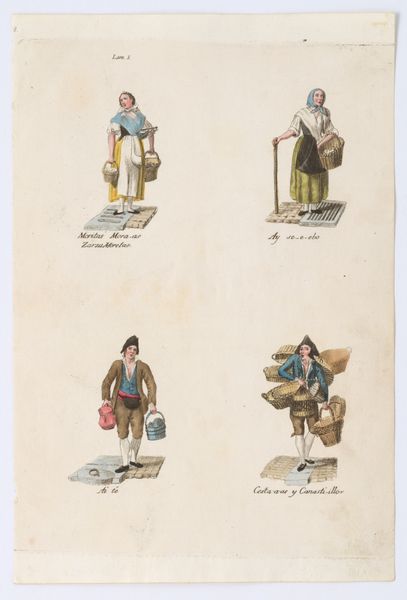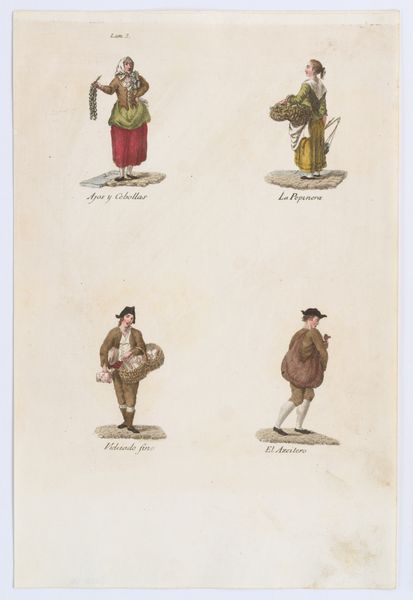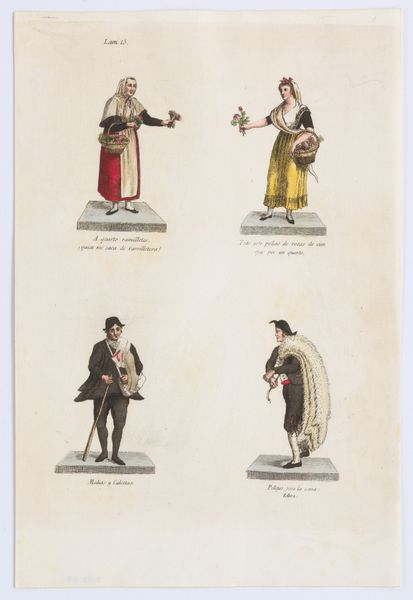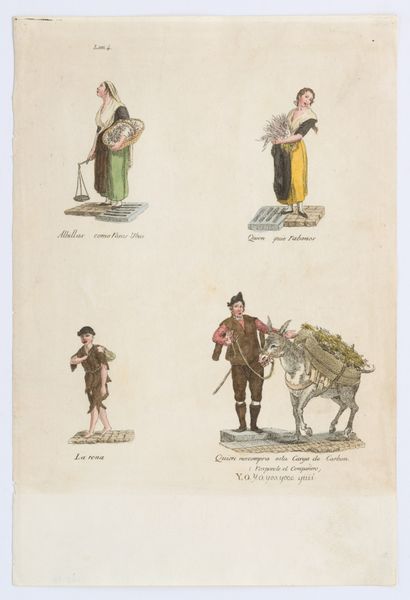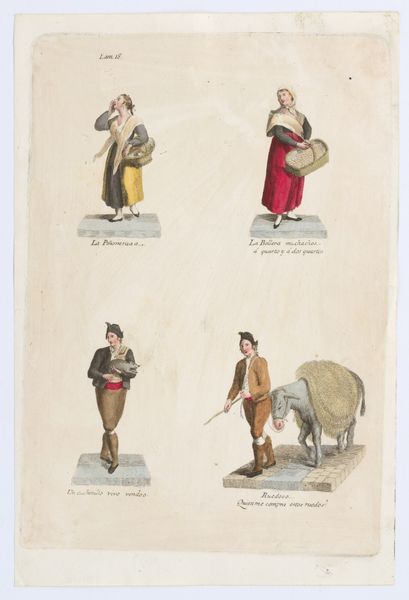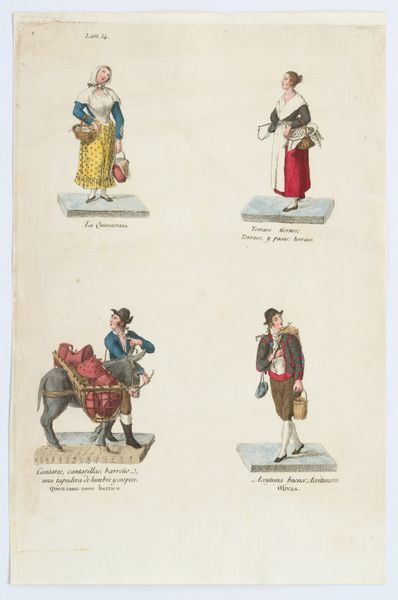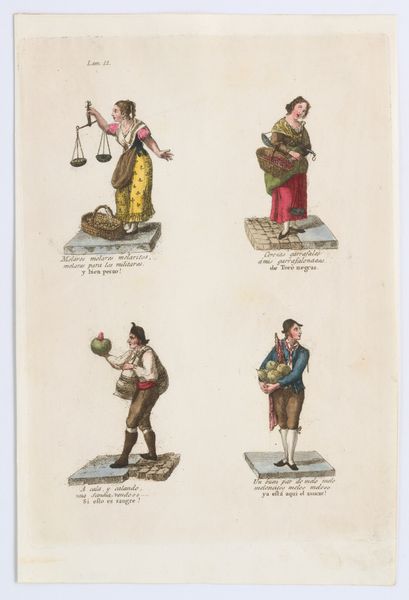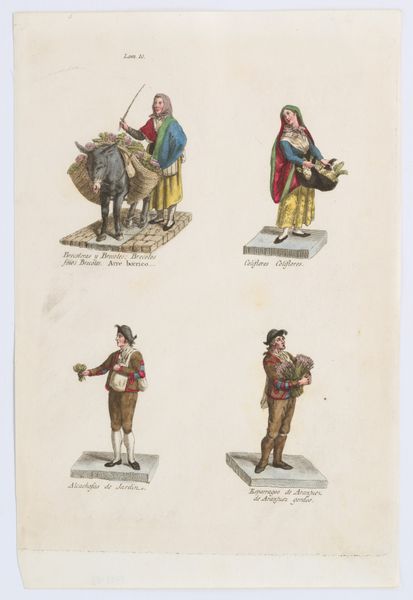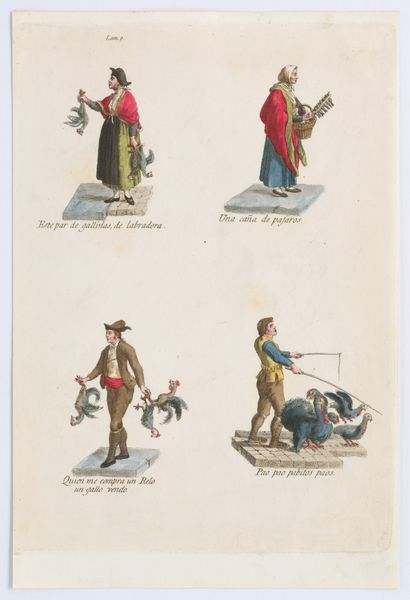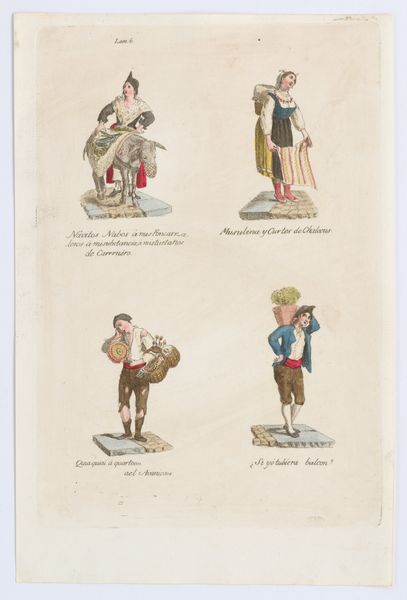
Plate 17: four street vendors from Madrid selling parsley, mats etc, from 'Los Gritos de Madrid' (The Cries of Madrid) 1809 - 1817
0:00
0:00
drawing, print, watercolor
#
drawing
#
water colours
#
narrative-art
# print
#
figuration
#
watercolor
#
genre-painting
#
realism
Dimensions: Sheet: 11 13/16 × 7 7/8 in. (30 × 20 cm)
Copyright: Public Domain
Curator: This print, "Plate 17: four street vendors from Madrid selling parsley, mats etc, from 'Los Gritos de Madrid'," was created by Miguel Gamborino between 1809 and 1817. It's currently housed at the Metropolitan Museum of Art. My immediate response is a curious blend of simplicity and observation, quite striking. What jumps out to you? Editor: Well, visually, I'm drawn to the vivid contrast between the figures and their pale surroundings. The details in the clothing and baskets—the woven textures, the particular cuts and folds—speak of a social stratification, a careful dance of needs and means in Madrid’s daily commerce. Curator: Precisely. The artist captures elements of daily life and local customs. Miguel Gamborino documents not just individuals but societal roles within a burgeoning urban environment. These prints were part of a larger series which depicted everyday characters, which aimed at revealing the social structure within the city. Editor: It's like visual anthropology. Consider the recurring motifs: baskets, produce, handmade wares. These aren't merely commodities; they're potent symbols of sustenance, craft, and the intimate relationship between people and their labor. What strikes me is how these humble vendors acquire dignity through their depiction. Curator: The choice to highlight these specific figures isn't arbitrary. Street vendors held a unique position within the urban fabric. Their cries and calls announced the day’s rhythm; they linked the producers with the consumers in a space where everyone comes to participate in social, economic, and communal growth. They were critical elements in urban cohesion and cultural preservation. Editor: Yes, there's an emotional cadence to this print, amplified by the cultural associations ingrained in these everyday images. Take the figure carrying mats - consider the symbolic weight of "home" intertwined within these portable shelters. Curator: This brings another point: it offers a window into economic conditions and consumer habits of early 19th-century Spain. There's a layered approach here, with elements revealing both stability and volatility. We could compare such prints to the more well known images from Goya’s “Los Caprichos” series. Editor: Reflecting on it, the art here performs a form of cultural preservation. This "snapshot" isn’t merely documentary, but celebratory, acknowledging the shared histories woven into the city's vibrant tapestry. Curator: Agreed. Looking at it now, Gamborino gave us more than an illustration. He offers us a slice of Madrid society, complete with all its economic realities.
Comments
No comments
Be the first to comment and join the conversation on the ultimate creative platform.
